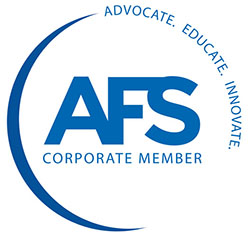Lost Foam Casting Workspace Highlights
- State-of-the art foam residue tracking
- Advanced foam vaporization and metal front turbulence modeling
- Solidification, porosity and surface defect analysis
Workspace Overview
The Lost Foam Casting Workspace provides lost foam casters with all the tools needed to simulate the filling, solidification and cooling subprocesses. Each subprocess is based on a template design which is tailored to provide a clean, easy-to-use setup interface that speaks the language of the casting process engineer. Since most defects in lost foam castings can be traced back to the filling profile, FLOW-3D CAST’s extraordinary accuracy in simulating metal flow and foam burning provides invaluable insights for producing high quality lost foam castings. Filling defects such as foam residue formation are accurately tracked and located in the final casting.
Lost Foam Casting Playlist
This simulation is used to identify cold shuts that can develop due to foam residue accumulation near the end of the fill. FLOW-3D CAST‘s lost foam workspace can effectively simulate casting patterns with complex geometries, variable pattern foam densities, and adhesives. Foam residue and wicking behavior can be tracked to inform sound casting design based on accurate defect prediction. Quickly and easily output comparative design cases for expedited design cycles.
FLOW-3D CAST‘s lost foam workspace can effectively simulate casting patterns with complex geometries, variable pattern foam densities, and adhesives. Foam residue and wicking behavior can be tracked to inform sound casting design based on accurate defect prediction. Quickly and easily output comparative design cases for expedited design cycles.
FLOW-3D CAST‘s Lost Foam Casting Workspace simulates casting patterns with complex geometries, variable pattern foam densities, and adhesives. Foam residue and wicking behavior can be tracked to inform sound casting design based on accurate defect prediction. This simulation is used to visualize the unique characteristics exhibited when motel material interacts with foam. Residual velocities are tracked to find areas of foam residue recirculation.
Processes modeled
- Filling
- Solidification
- Cooling
Flexible Meshing
- Structured meshing for fast, easy generation
- Multi-block meshing for localized accuracy control
- Foam-conforming meshes for memory optimization
mold modeling
- Ceramic filters
- Inserts – standard and porous
- Air vents
- Chills
- Insulating and exothermic sleeves
- Moving ladles and stoppers
Advanced solidification
- Chemistry-based solidification
- Dimensionless Niyama criteria
- Cooling rates, SDAS, grain size mechanical properties
Filling Accuracy
- Foam/melt interface tracking
- Gas/bubble entrapment
- Automatic melt flow drag calculation in filters
Defect prediction
- Foam residue defect tracking
- Cold shuts
- Porosity prediction
- Shrinkage
- Hot spots
Dynamic simulation control
- Probe-controlled pouring control
Complete analysis package
- Animations with multi-viewports - 3D, 2D, history plots, volume rendering
- Porosity analysis tool
- Side-by-side simulation results comparison
- Sensors for measuring melt temperature, solid fraction
- Particle tracers
- Batch post-processing
- Report generation






